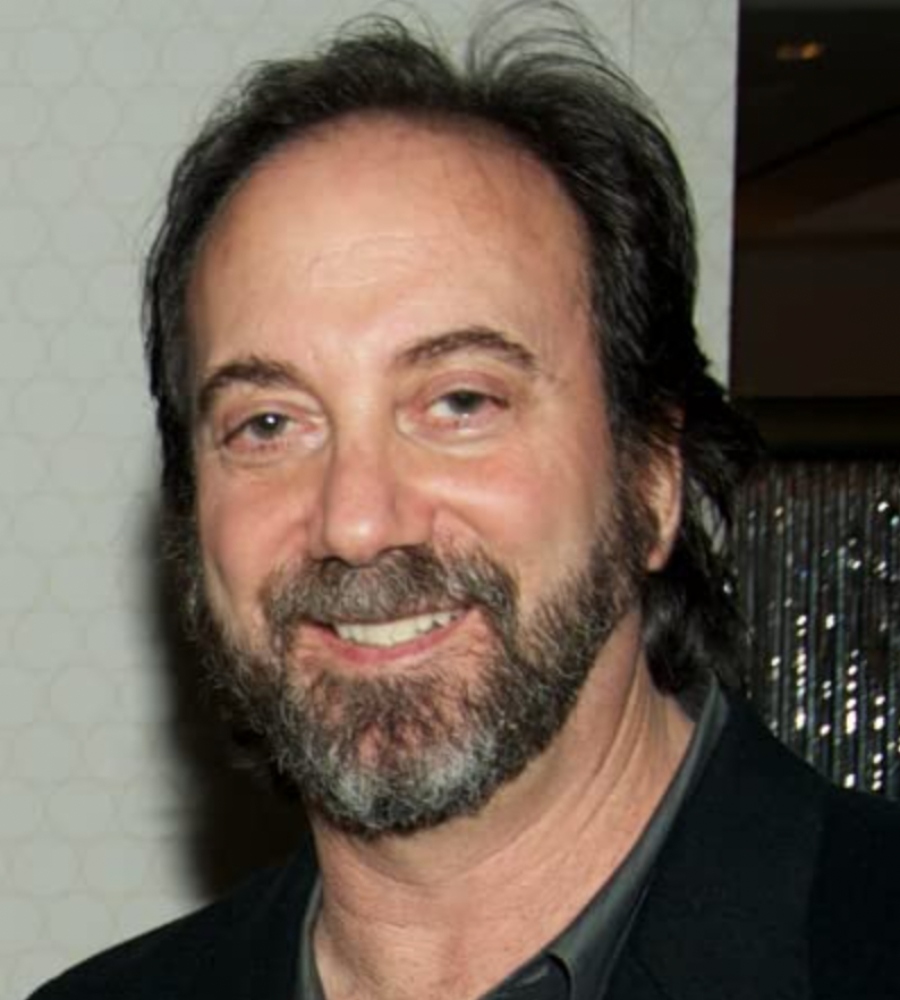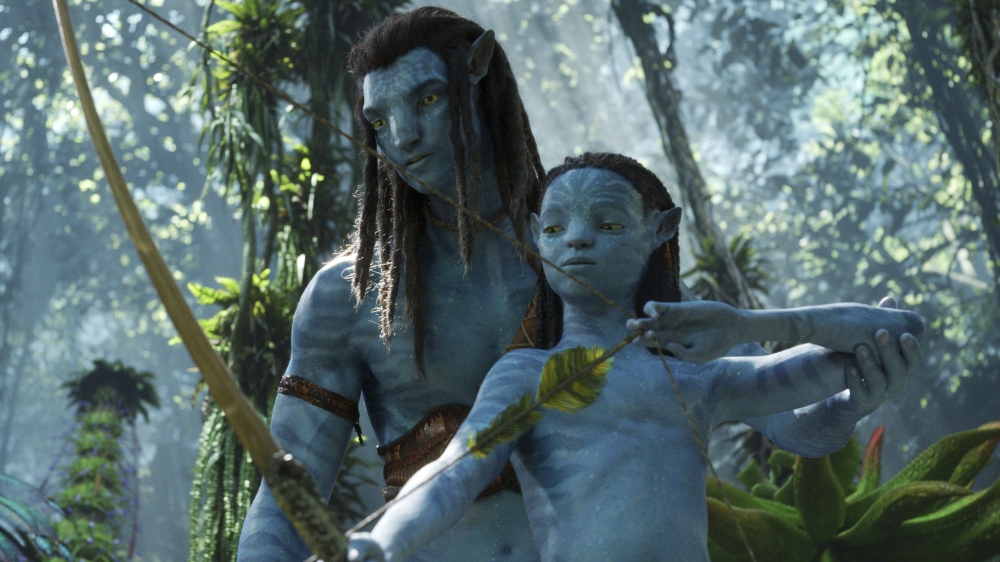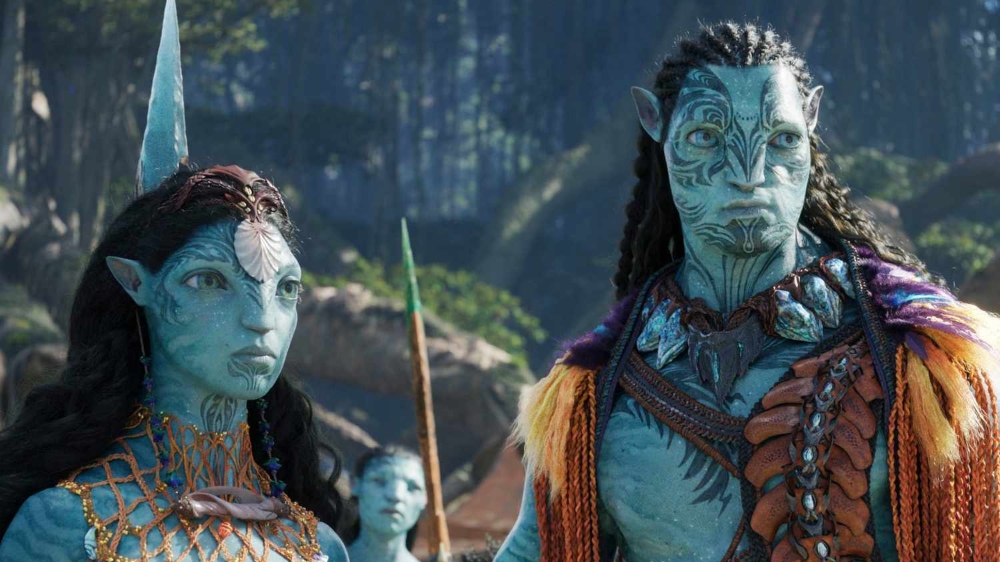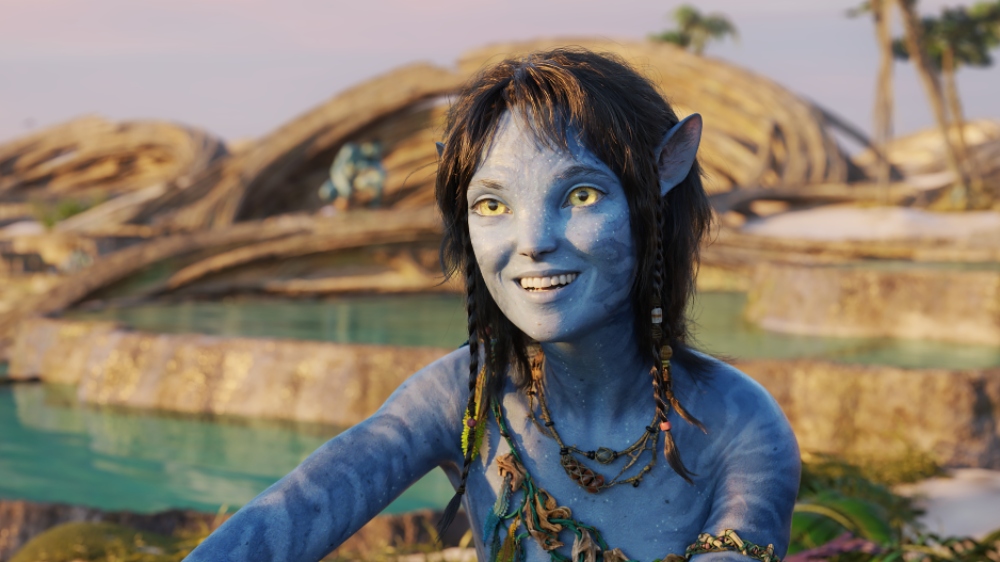With a worldwide haul of nearly a billion dollars after just 10 days in global release, it’s safe to say that James Cameron‘s long-awaited Avatar: The Way of Water — the first of four planned sequels to 2009’s mega-hit Avatar — is on its way to becoming another smashing success.
Years in the making, the sequel once again stretched the technologies of moviemaking. Motion capture was just the first step in a process that involved designing and creating shots in a completely digital environment. In addition to co-writing, producing, and directing Avatar: The Way of Water, Cameron also served as one of four credited editors who wrestled a mountain of material into a feature that’s just over three hours long.
After taking a trip to Pandora, Below the Line recently spoke to Editor Stephen Rivkin, ACE, who also worked on the original Avatar, as well as Alita: Battle Angel, which was produced by Cameron’s production company Lightstorm Entertainment. Additionally, Rivkin edited four films directed by Norman Jewison, including The Hurricane, and co-edited the first three films in Disney’s hit Pirates of the Caribbean franchise. More recently, he has worked with A-list directors such as Ridley Scott (Exodus: Gods and Kings) and Michael Mann (Blackhat), and he is also one of three editors who represent the Editing branch of the Academy as a member of its Board of Governors.
Rivkin had one condition in speaking with Below the Line via Zoom: “Please honor the entire crew. I’m representing a team here.” Indeed, his fellow editors on Avatar: The Way of Water were Cameron, David Brenner, ACE, and John Refoua, ACE.

Below the Line: First, how did you work alongside three other editors?
Stephen Rivkin: Well, it’s actually four editors and two additional editors. We just divvy up the work, and believe me, there’s quite a lot of work to divvy up. In a process this complicated, we start by dealing with the dailies with Jim. He would make selections of performances that he’s interested in. We then begin the process of cutting a performance from that. That’s where it all starts, the performance.
We would leapfrog a lot of times. We could all be working on four different scenes at once as opposed to seeing one scene through, because there was always the need to keep things moving.
BTL: So Cameron shot all the performances before any effects were added?
Rivkin: That is correct. The process is performance-driven. We edit those performances. Once they’re approved, they go to our internal lab where the files are populated with digital assets — environments, wardrobe, characters. Those original performances are now driving virtual characters in digital environments.
We then go through a process where we create virtual cameras using those performances. With that step, we make the shots that would be constructed into scenes for the final movie. Once those are approved, they go to Wētā FX to be fully rendered.
That’s a very long process. We had the added complication of making a template of all these live-action characters within these virtual shots. That would be a blueprint for shooting the live-action to integrate into those shots. We also had the complication of unprecedented underwater capture that adds a whole other layer of complexity to building performances.
To answer your first question, everybody worked on everything [laughing], making this possibly the most complicated process of moviemaking ever.

BTL: So does your editing — your concept of each scene — change as each layer of effects is added?
Rivkin: We may be talking about different things, but I think what you’re asking about is when the virtual environments and effects are combined with the live-action performance capture. Okay. So we have a phase where Jim creates templates and where he creates his shots. Any performance can be a wide shot, a closeup, a medium shot, a crane shot. Any performance can be any one of those shots. During this phase of virtual photography, that’s when the shots are created that we will edit into the film for the second time. Here we can see the structure of the shots with the effects in them — not fully rendered, but in an intermediate phase where we can see everything as it will develop through final render.
BTL: You say you have to edit a second time. I’m imagining people wearing ping-pong-ball suits in raw footage that you edit, and then effects are added and you edit the material again now that those people are blue. I’m wondering if those finished effects change your timing and rhythm.
Rivkin: Yes, it does. You’re absolutely right. We edit the performance capture with the ball suits, but a lot of times we’re editing with closeups because we want the detail of the face as a record. That way we can make sure that the performances are accurately rendered in the CG characters.
The intermediate phase is where new shots are created using those performances. So yeah, that’s when it changes. That’s when timings change. That’s when we decide, ‘Wow, this is a wonderful wide shot.’ Or, ‘this moment is when we want the closeup.’ So yes, everything changes on the second pass of editing when we actually have shots to use that represent the shots that will be creating the scenes.
BTL: Does Mr. Cameron work from previz or a shot list?
Rivkin: There were a couple of sequences where we did, I wouldn’t call it a traditional previz, but something based on stunt capture where we would kind of map things out. But for the most part, we’re creating the shots as we go in development. We have an intermediate camera pass where we check the files and make sure everything’s working. A lot of scenes are kind of roughed through before they get to Jim for final virtual cameras. So there is an intermediate phase, and a lot of times some of those shots end up evolving and getting used in the final process as well.

BTL: So, if I’m understanding you correctly… if you need a shot, you can just create one?
Rivkin: Yeah, absolutely. You need a shot, you go back. I’ll give you an example. When the kids go out into the water before Jake [Sam Worthington] and Quaritch [Stephen Lang] begin to fight on the ship at the end, we have a huge explosion. Jim said, ‘You know, I really feel like we need a wide shot to show the fire encircling them. That way they have no choice but to go back to the ship.’ So the lab worked on the fire and created a shot that we put in there to help establish the parameters of what was happening.
BTL: I’m guessing the more people who see the material as it’s being edited, the better it is for everyone.
Rivkin: Most of all for Jim, who’s informed by what’s in the frame, what’s in the background. You don’t see that in the performance capture phase. You see other characters in the background, but there’s virtually nothing else in there except a blank stage or people standing around in the background with reference cameras, which, of course, you would never see in the final scene.
BTL: What I love about Cameron’s movies is their sense of geography. Can you talk about that final action sequence aboard the ship? There are so many setups, so many angles, and multiple storylines, yet we’re always confident about where we are.
Rivkin: First, a lot of hands went into this. If you saw the performance capture from those moments, it would be an interesting comparison. You know, people running down a channel that would ultimately be a virtual shot with water chasing them, all of that water was CG. I think Wētā achieved a high watermark, if I could use the expression in this particular case. I don’t think water in CG form has ever been conquered the way that it has in this film.
The intercutting of all the stories happening simultaneously was obviously challenging for our team. Ultimately, Jim had his opinions about where he wanted us to spend time, [and] how things were intercut and broken up. We all worked very hard on that section of the film to make it what it is.
Primarily, Jim and I focused on the last half-hour, except for what we call “the parents’ revenge.” David Brenner worked on that. John Refoua worked on much of the battle preceding the ship sinking, when the Metkayina attack. We all worked on parts of the end; I think everybody worked on different sections.

BTL: Was there ever an example where the final effects surprised you? Something you didn’t expect?
Rivkin: Because we had a template of what was going to be there, we were maybe surprised by the amount of detail or just the expertise of how something was finished. For me, it’s always a surprise to see performances we put together months, even years before, come back in all their detail, in all their glory. To be able to see the actor’s faces and look into their eyes again is pretty amazing. For me, that’s the most impressive part of the process.
BTL: Can you estimate how much in the movie was real as opposed to CG?
Rivkin: I think most everything was CG. Certain parts of the decks of the ship were created for the live-action portions. Also, some other sets for the live-action scenes. Everything outside is pretty much virtual environments. Even the machinery was virtual, computer-generated. The thing is, you can’t tell what’s real and what isn’t. Honestly, I look at something and think, I can’t remember… did we build part of that, or is it virtual? I’m not sure anymore!
BTL: Looking back to The Terminator, or even the first Avatar, the technical advances in visual effects are just amazing. Did you take any special steps for the 3D on this film?
Rivkin: I mean, we’re aware of the 3D. Jim sometimes generates shots that are, shall we say, 3D-friendly. He knows what will work in 3D. Always having the camera moving helps, [and] always having foreground and background elements helps. We’re aware that certain quick cuts are sometimes harder to watch in 3D. In a fast action sequence, we might reduce the amount of 3D a little bit so that it’s easier to watch. But the wider, longer shots, obviously, they are what they are. We check [the] 3D later, but I’d say we’ve learned through the years that certain things work well. When we imagine something will be really great in 3D, it usually is.
BTL: Are you working on the next sequels?
Rivkin: Yes, we are actively working on the sequels.
BTL: Avatar has become a career, in a sense.
Rivkin: It is indeed. I don’t know how many years we’ll be going on, but we’re here for the long haul. It’s amazing to go along on this journey. Jim’s vision, his imagination — he is just an extraordinary filmmaker. It’s really something special to be associated with this.
Avatar: The Way of Water is now playing in theaters across the globe courtesy of 20th Century Studios. Click here to read our interview with Production Designers Ben Procter and Dylan Cole.





